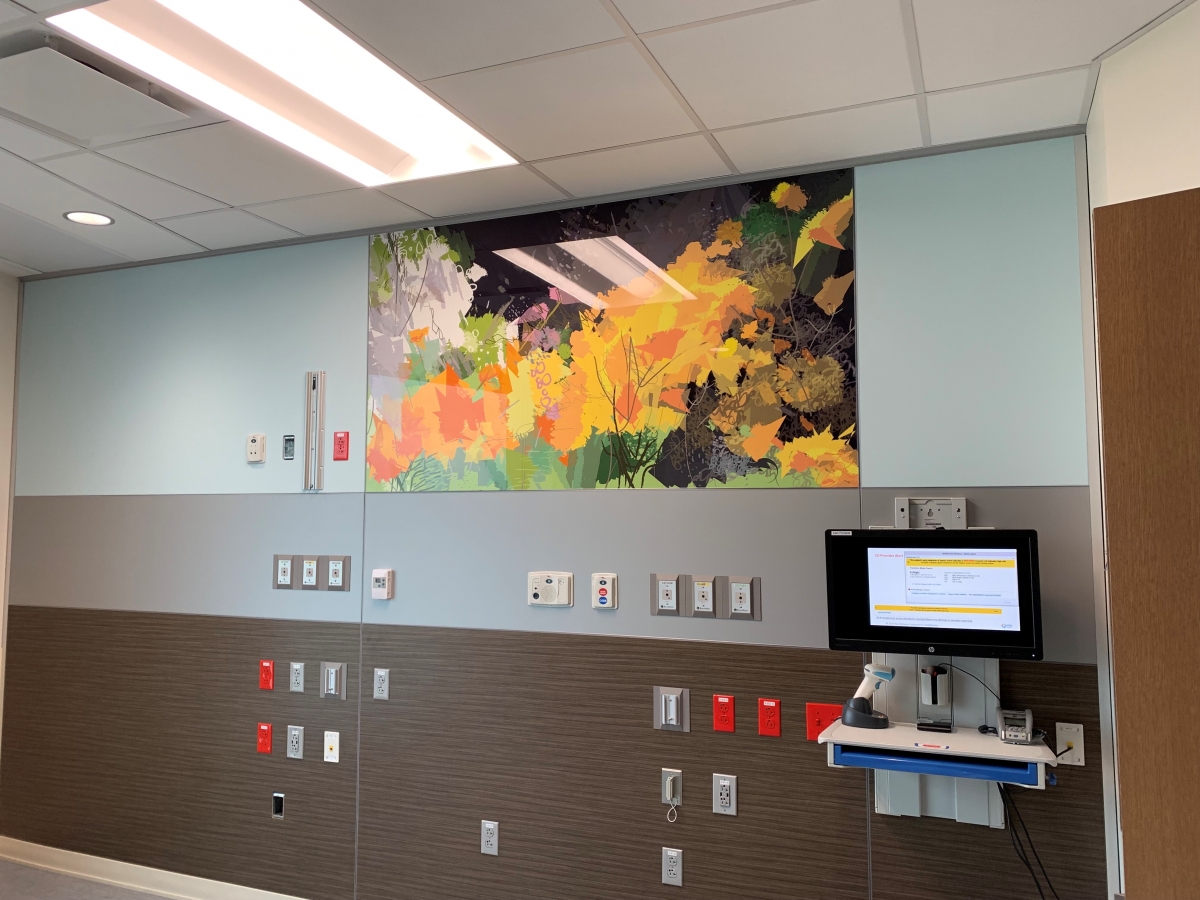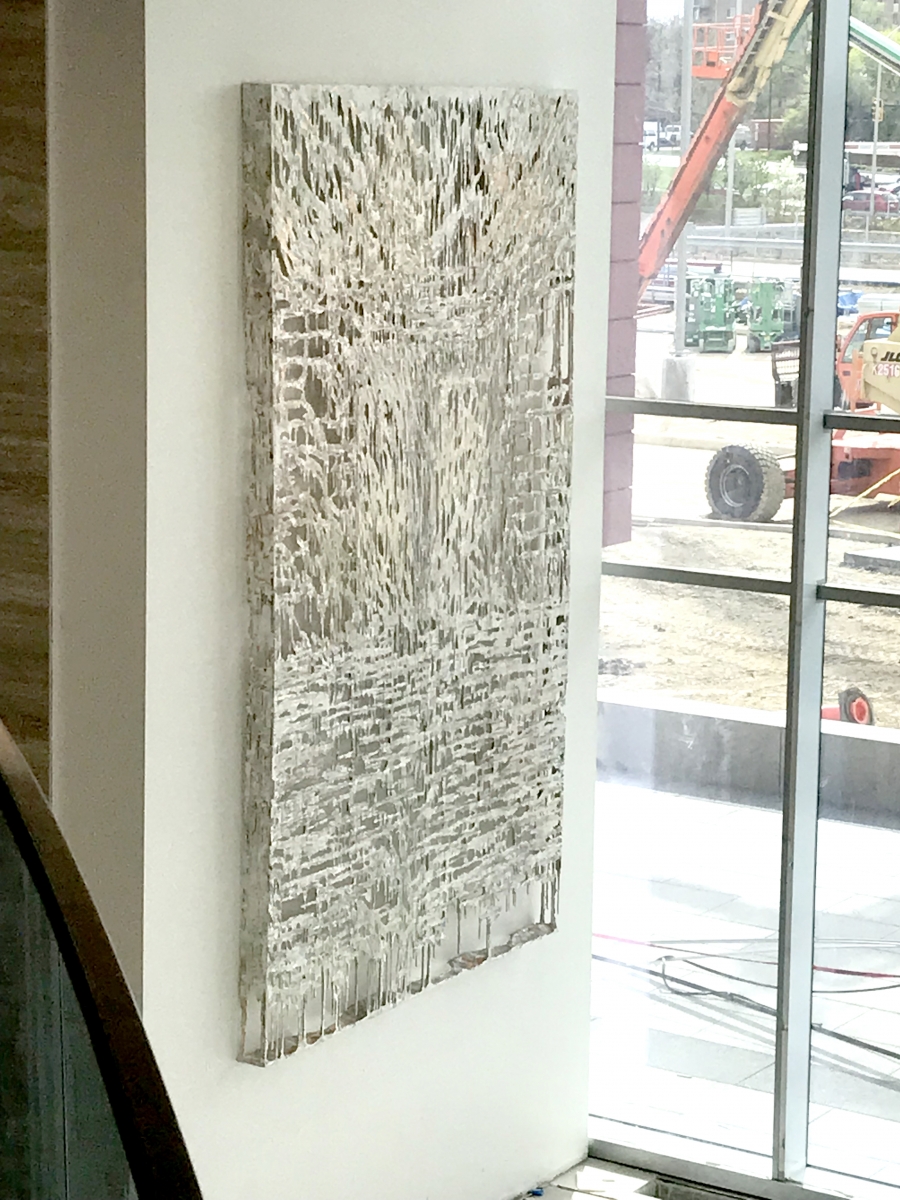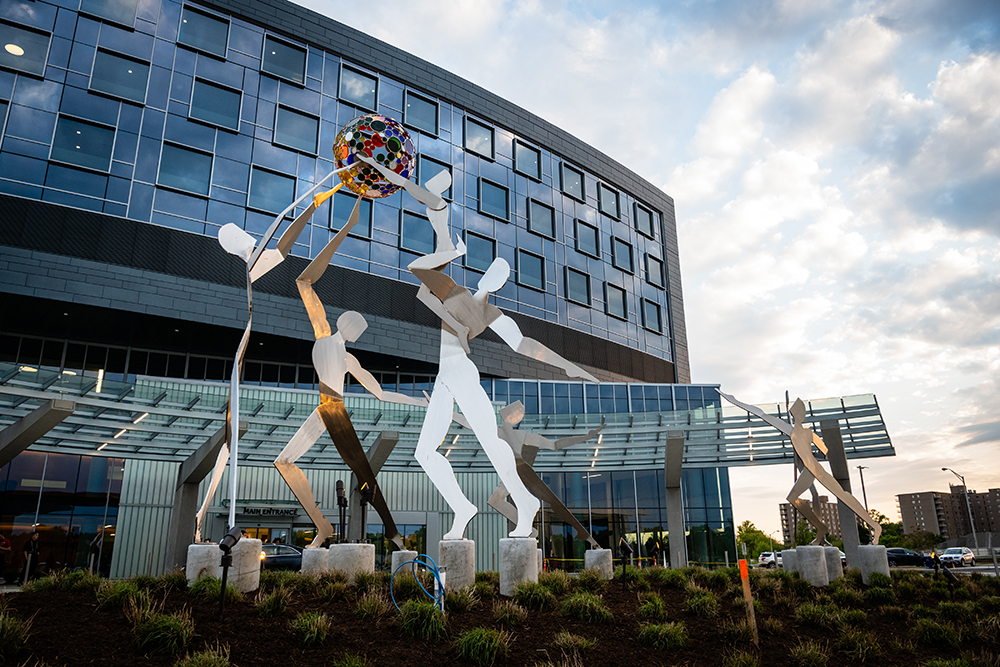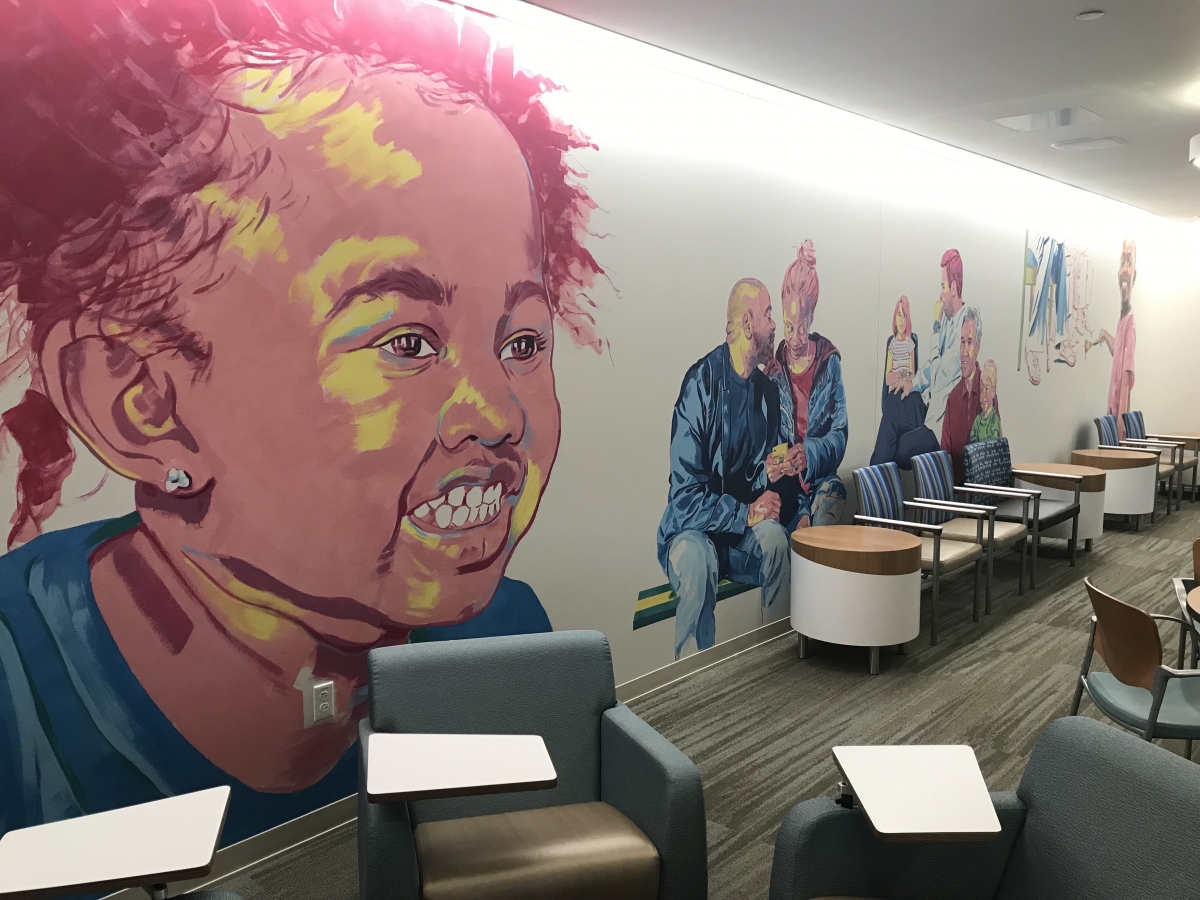Summa Health Connects Patients to Art and its Healing Powers
Posted by Mar 19, 2020

Meg H. Stanton
Since 1892, Summa Health has been dedicated to its mission to provide the highest quality, compassionate care and contribute to a healthier community. Recognizing that a patient’s physical health is fundamentally linked to his or her emotional and spiritual well-being, in 2016 Summa committed to integrating the healing arts into its renowned patient care by creating a Healing Arts Leadership Council made up of senior hospital staff, benefactors, and community leaders. This Council is dedicated to bringing the healing powers of art and music into the hospital.
Studies show the healing potential of the arts is powerful. It can change a person’s focus and alter a body’s physiology. Research suggests that it can lower blood pressure, improve stress management, curb anxiety and depression, alleviate pain, enhance memory, improve communication, promote wellness and relaxation, and enhance the production of proteins that accelerates healing and minimizes the danger of infection.[1] When the Curatorial Committee learned that patients improve faster after surgery by being exposed to nature, they made sure to incorporate views of our local parks into every patient room—all 157 of them! Here’s an example:

By incorporating the art of human expression into the healthcare environment, the stress, fear, and apprehension experienced in varying degrees by staff, visitors, and patients can transform into strength, inspiration, and solace. “We recognized that the arts can enhance the healing process, speed recovery time, and enrich the patient’s overall experience. So when we designed the new state-of-the-art [patient] tower promoting healing and providing a comfortable hospital stay in a relaxing environment, we knew that an investment in the healing arts would foster a positive, stress-reducing environment for family and caregivers, and one that also would improve the work environment for our medical professionals,” says Dr. Cliff Deveny, Chief Executive Officer, Summa Health.
 As Summa is a community hospital, the Healing Arts Council decided early on that all artwork displayed would feature artists with a connection to Ohio, and predominantly Northeast Ohio. In addition, all art would be original, with the goal of engaging viewers with the pieces, and focusing their attention on the artworks’ unique qualities. We did not want the experience of original art to be watered down by surrounding it with posters and prints. To enhance the viewer’s connection with the art, Summa created a website dedicated to the art collection which includes entries discussing each particular artwork and the artist, as well as information about the medium, subject, and other relevant topics. All of this is accessible by simply placing the camera on your cell phone in front of a QR code provided on the label for every piece of art, creating a wonderful educational experience for patients, staff, and visitors!
As Summa is a community hospital, the Healing Arts Council decided early on that all artwork displayed would feature artists with a connection to Ohio, and predominantly Northeast Ohio. In addition, all art would be original, with the goal of engaging viewers with the pieces, and focusing their attention on the artworks’ unique qualities. We did not want the experience of original art to be watered down by surrounding it with posters and prints. To enhance the viewer’s connection with the art, Summa created a website dedicated to the art collection which includes entries discussing each particular artwork and the artist, as well as information about the medium, subject, and other relevant topics. All of this is accessible by simply placing the camera on your cell phone in front of a QR code provided on the label for every piece of art, creating a wonderful educational experience for patients, staff, and visitors!
Because of our focus on local artists, our Curatorial Committee was able to commission significant pieces related to our mission. These include, among others, Stephen Canneto’s “The Beacon of Hope” outside the main entrance, Diana al Hadid’s “A Way With Words” wall sculpture in the lobby of the ground floor, and Darius Steward’s mural “The Waiting Room” in the same-day surgery waiting room on the first floor.

One of our primary goals of the Healing Arts Program at Summa is to advance patients’ natural healing abilities by combining evidence-based, innovative, and holistic art and music therapies with other medical treatments. This will strengthen our commitment to advance clinical research and education by measuring the impact of these therapies and sharing the results, which will be used to improve care and establish best practices that we hope will serve as a national model. This will provide an excellent opportunity for medical students, residents, and fellows to participate in this important research.
In addition, we are hoping to become a resource for education by partnering with local schools, youth arts organizations, and colleges, offering them a gallery in which to feature their work or, in the case of choirs and dance or musical groups, a venue in which to perform. We also are hoping that students in the art and music therapy departments of our local universities will gain their practicum experience at Summa Health.
 Since the new tower opened in May 2019, patients, staff, and visitors have been positively impacted and inspired by the original artwork in many ways. From the nurse who stops by a painting to reflect on her day to the patient passing by beautiful art during a therapy session, the art collection has been a tremendous source of inspiration and ease. If our art engages a viewer and takes their mind off of what they’re dealing with if only for a brief time, we have done our job. And indeed, many have commented that the artwork takes their minds to different places and relaxes them during times of high stress. Our collection has at times been referred to as “Akron’s second art museum.”
Since the new tower opened in May 2019, patients, staff, and visitors have been positively impacted and inspired by the original artwork in many ways. From the nurse who stops by a painting to reflect on her day to the patient passing by beautiful art during a therapy session, the art collection has been a tremendous source of inspiration and ease. If our art engages a viewer and takes their mind off of what they’re dealing with if only for a brief time, we have done our job. And indeed, many have commented that the artwork takes their minds to different places and relaxes them during times of high stress. Our collection has at times been referred to as “Akron’s second art museum.”
Visual, literary, and performing arts are featured in many hospitals, outpatient facilities, hospices, and nursing and retirement facilities across the nation and the world. Many hospitals employ art and/or music therapists, or have departments dedicated to integrated medicine and/or the healing arts. Artists interested in collaborating with healthcare organizations should reach out to these institutions through their healing arts, art and music therapy, behavioral health, or hospice departments. Now, more than ever, can we see the healing value of the arts in healthcare for the physical and mental health of our care providers, patients, and their families. Hospitals and our communities are only made stronger when they care for the whole person, and the arts are crucial to helping make this possible. Together, these partnerships can be a powerful healing force for staff and patients alike.
[1] Why Healthcare Institutions Invest in the Arts (Americans for the Arts, 2008) https://www.americansforthearts.org/sites/default/files/pdf/get_involved/advocacy/research/2013/arts_health13.pdf






